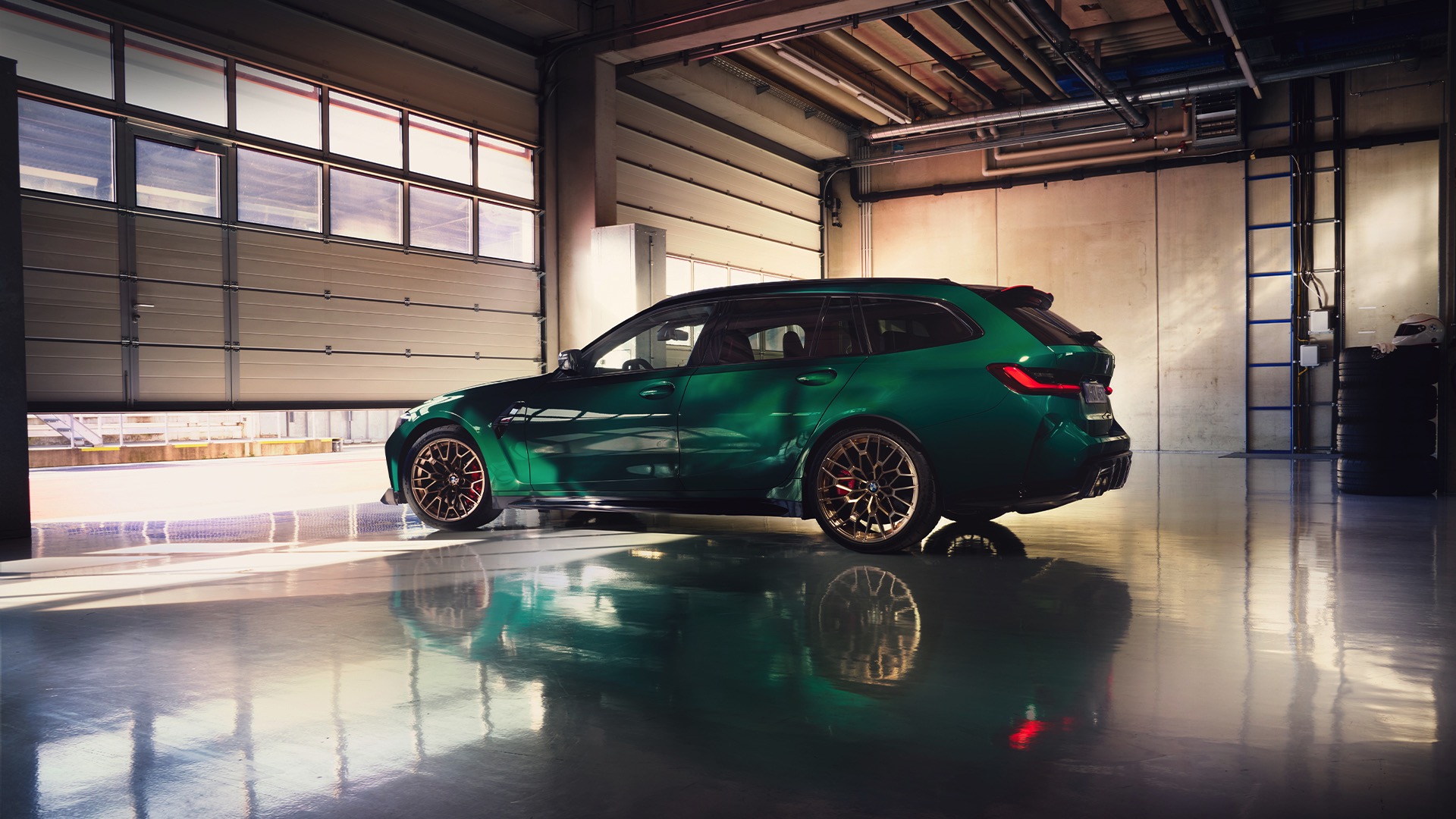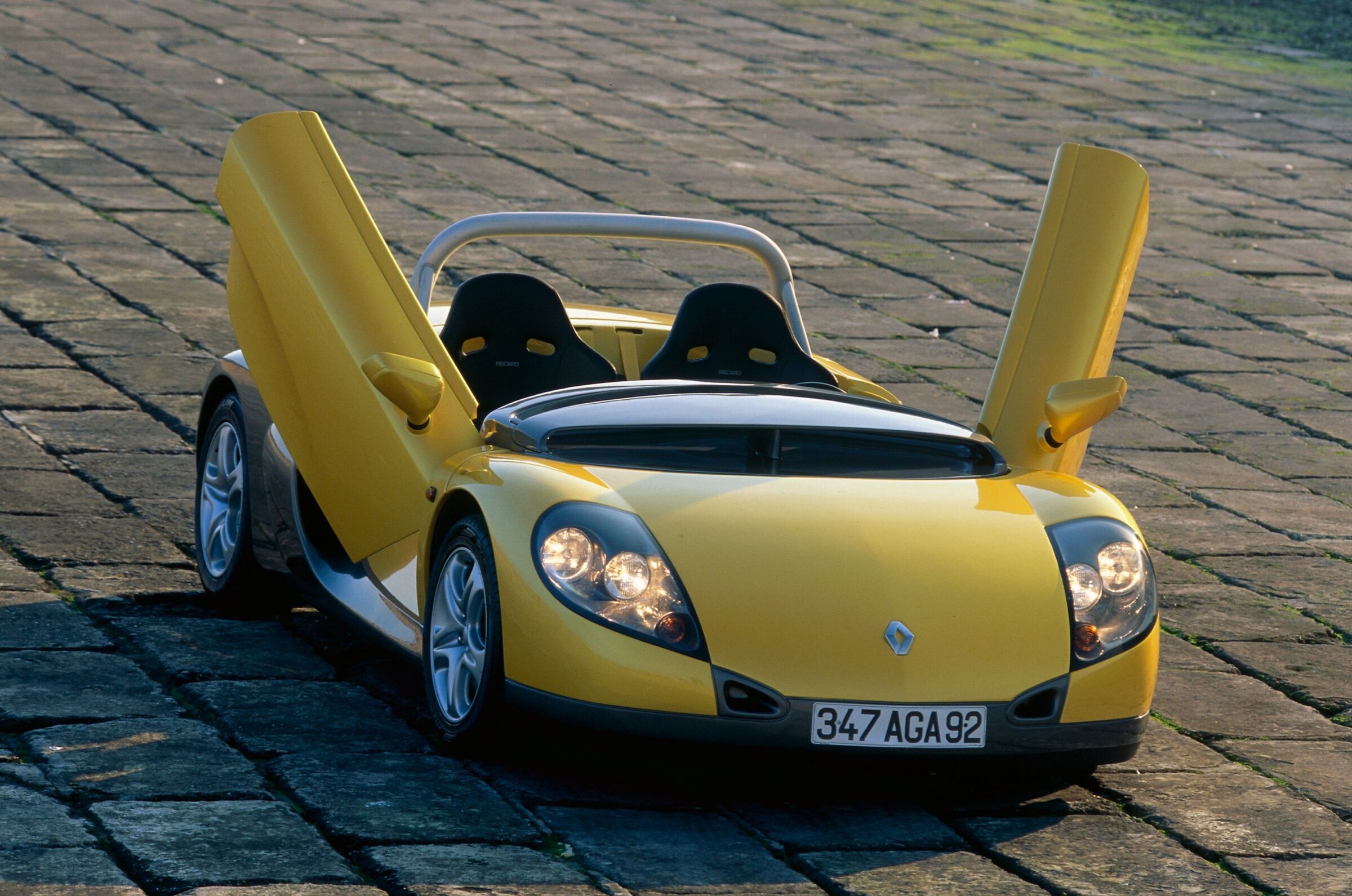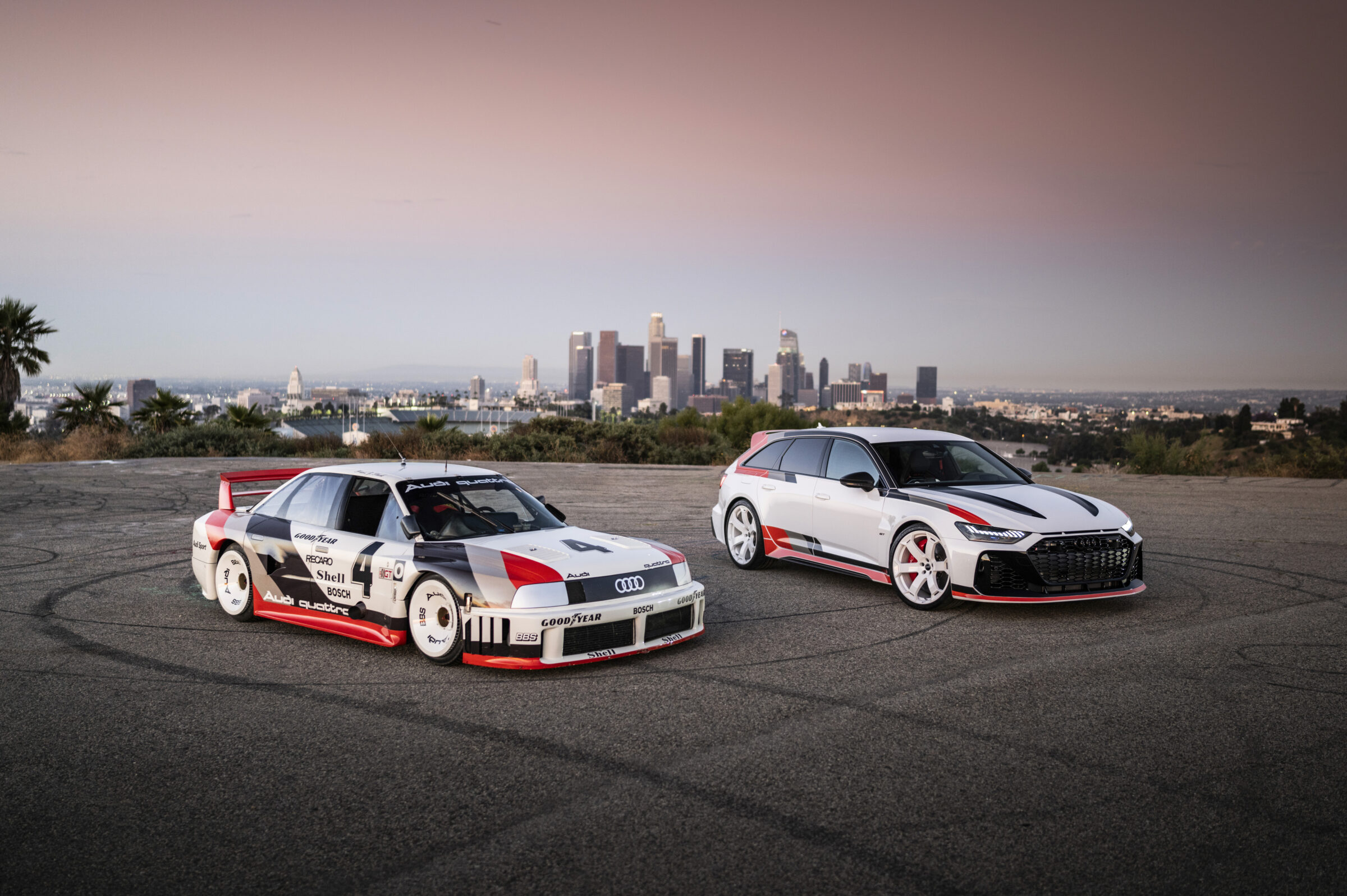Aston Martin V12 Speedster
The customisation department Q by Aston Martin is not only responsible for more or less elaborate equipment details of the British sports car brand. From time to time, complete cars are also created here, which with a little luck may even go into low-volume production. About a year ago the starting signal for a new project was given. As a result, the V12 Speedster, which should actually have been one of the star cars of the Geneva International Motor Show (GIMS), made its debut at the company’s headquarters in Gaydon now. With this radically open two-seater, Q by Aston Martin clearly demonstrates what is technically feasible for road-legal vehicles.
Head of design Miles Nurnberger created an independent carbon fibre bodywork for this purpose, which, however, adopts typical accents such as the radiator grille or the rear light band from current Aston Martin models. Vehicles such as the DBR1 from 1959 or the CC100 Speedster from 2013 as well as the DB3S from 1953 also played a role in the design process. Next to that, a bonnet nostril was integrated into the bonnet, as was once the case with DB4, DB5 and DB6. This provides more space for the engine underneath. Nurnberger did without a roof just as consistently as he did without displays and monitors in the interior. The only protection for the passengers is provided by two rollbars behind the seats, which run out in partially glazed bumps on the boot lid. These bumps provide space for the transport of two racing helmets. Behind the trunk lid sits a rear wing, which is smoothly integrated into the body design.
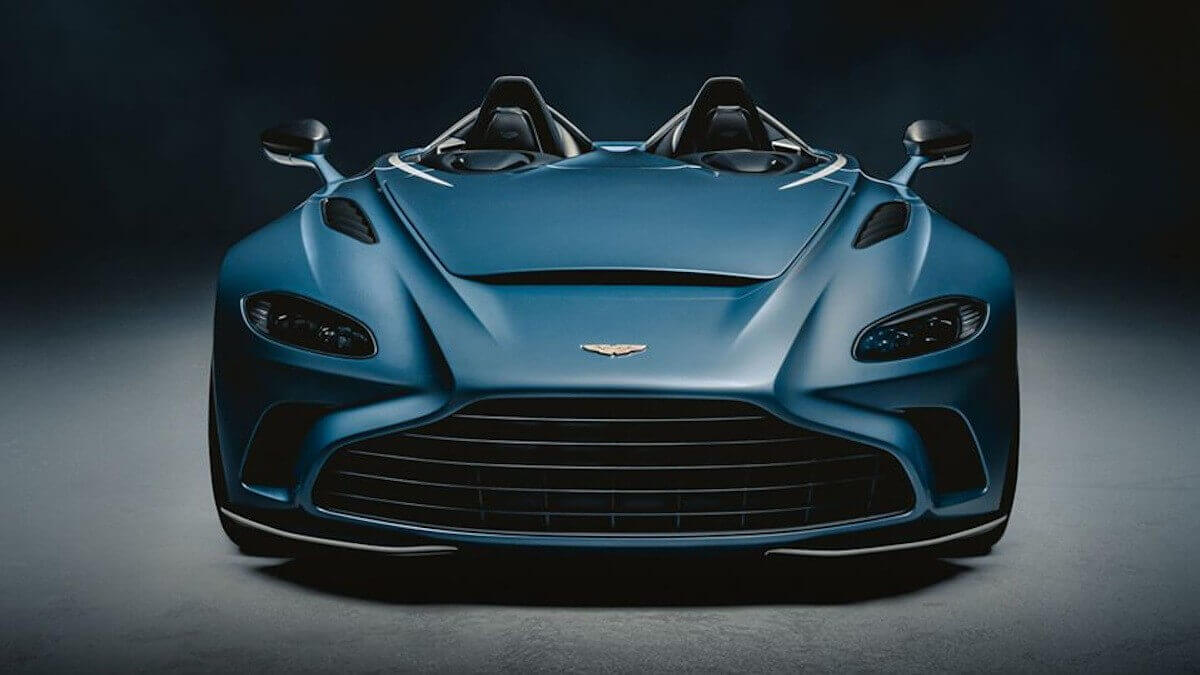



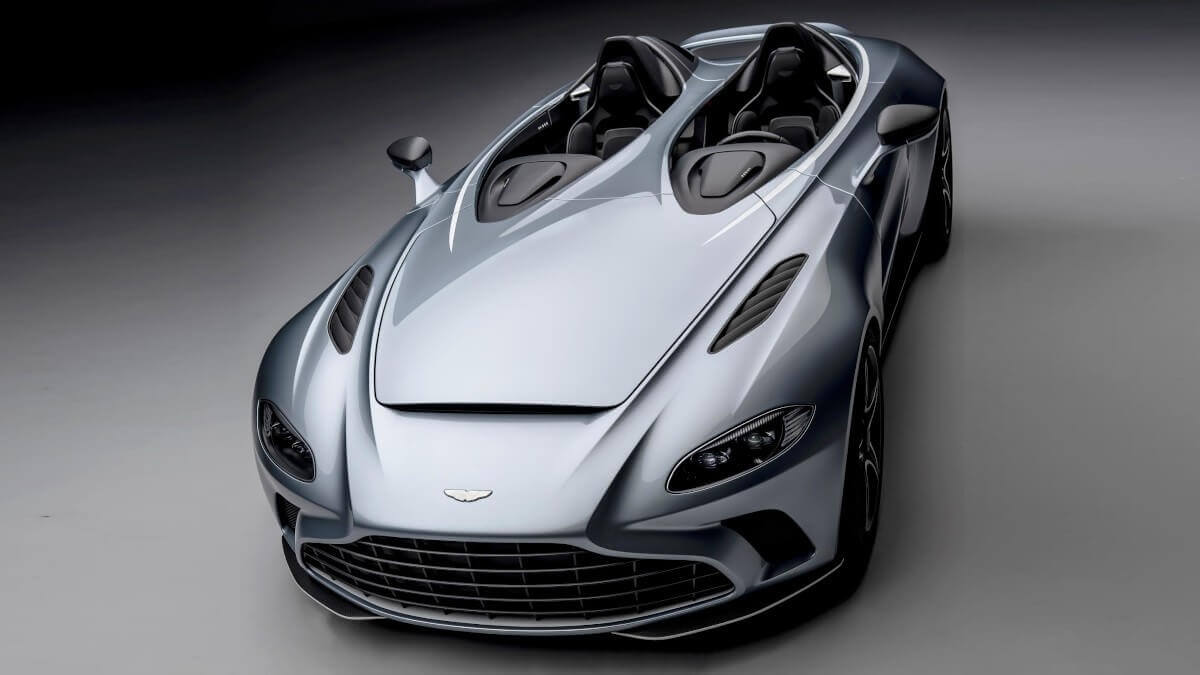



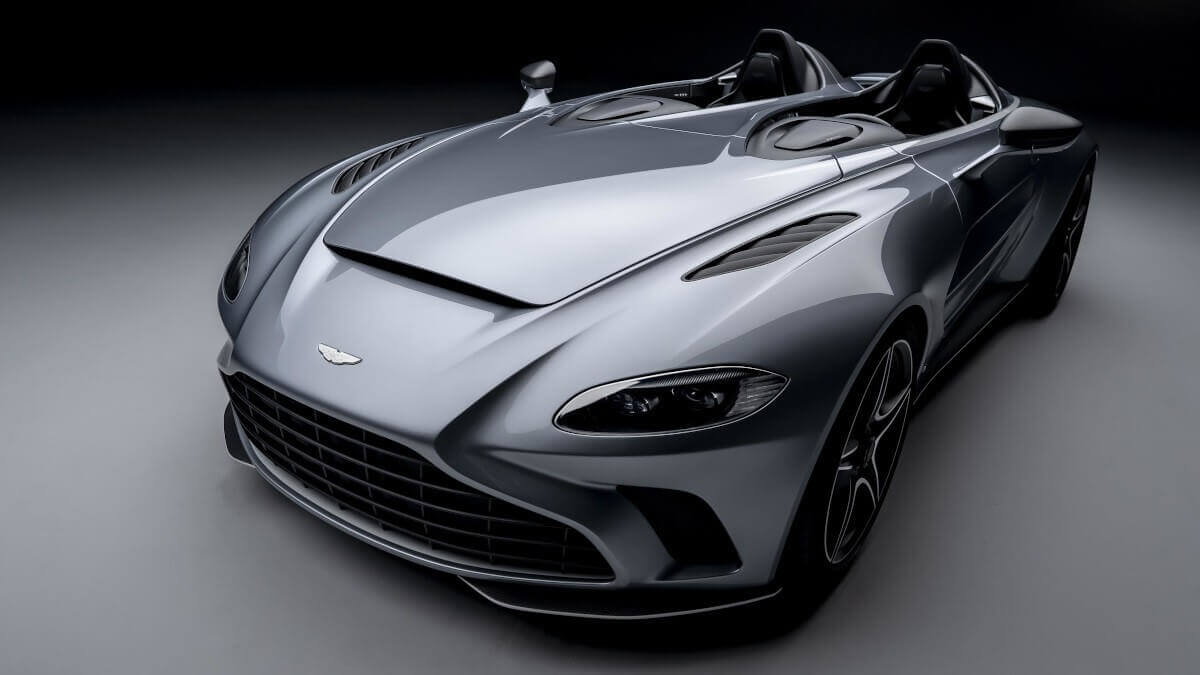

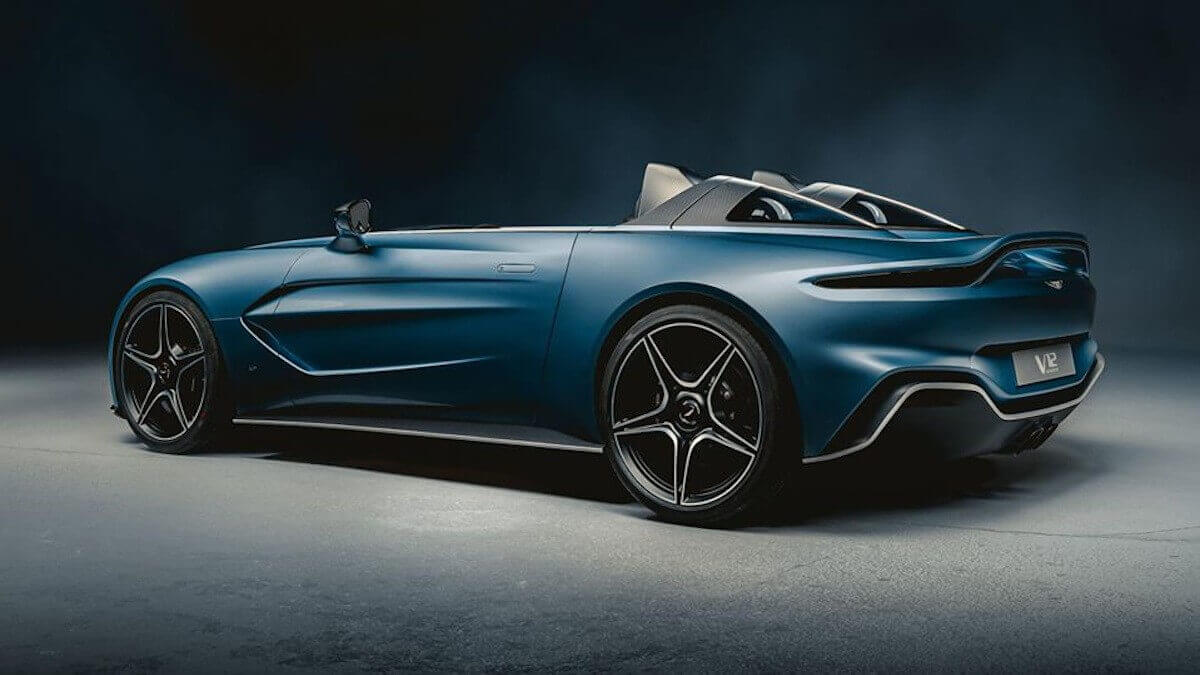

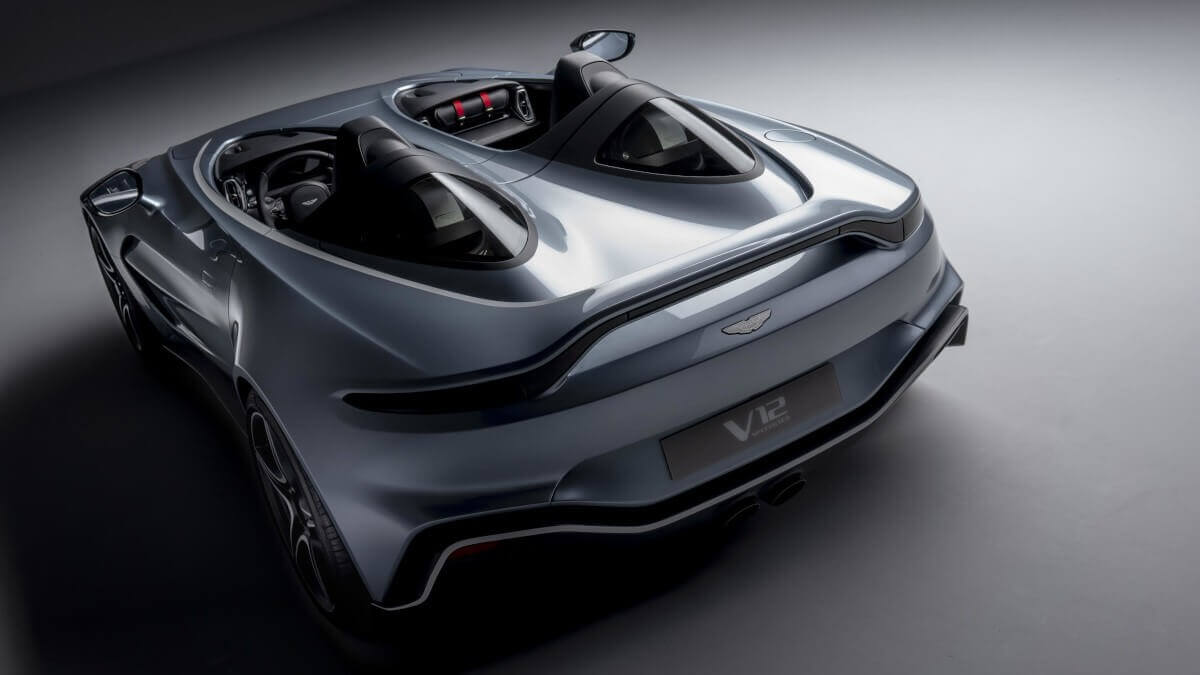



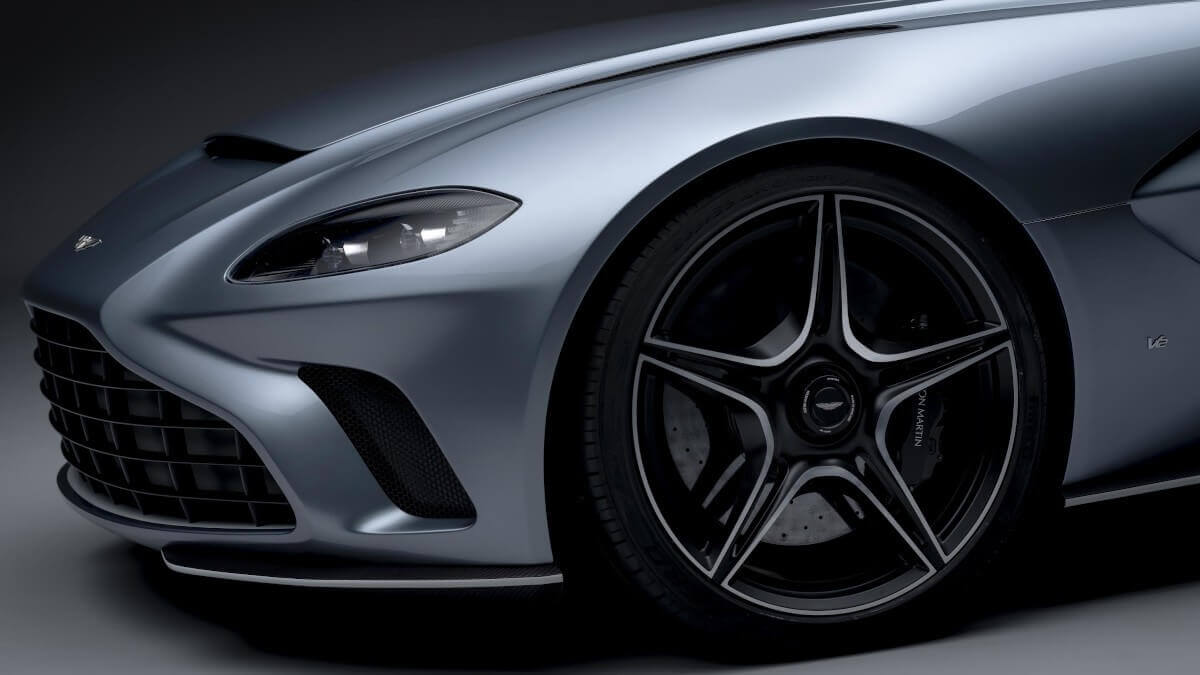



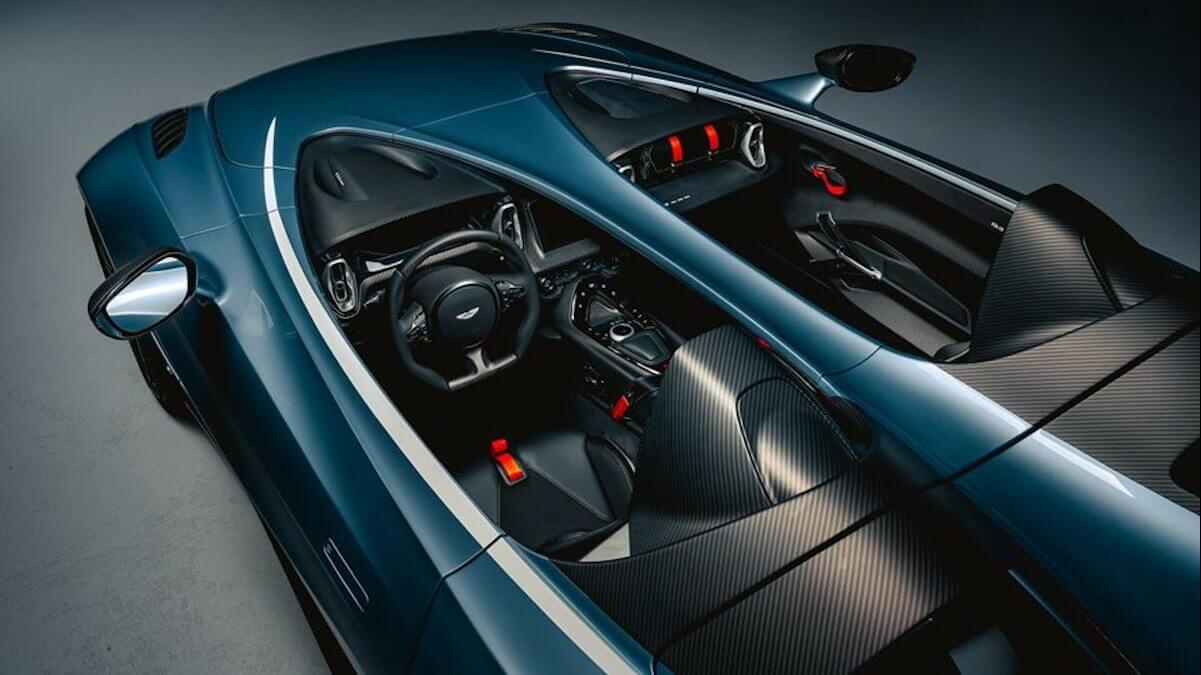

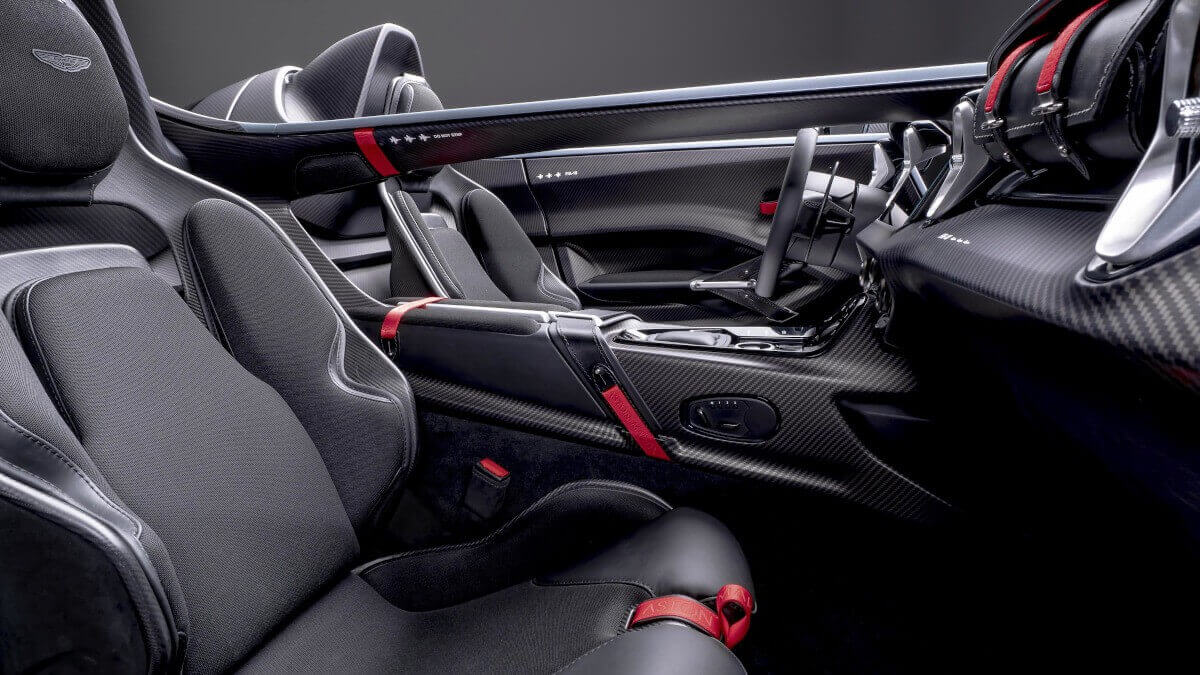

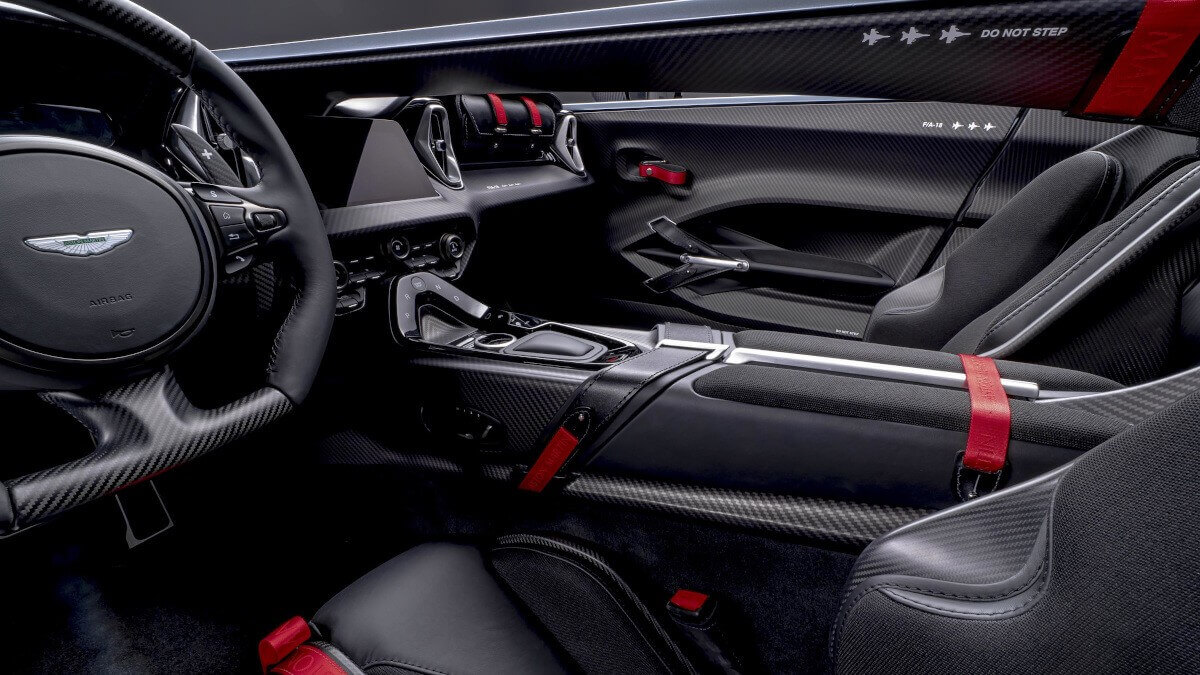





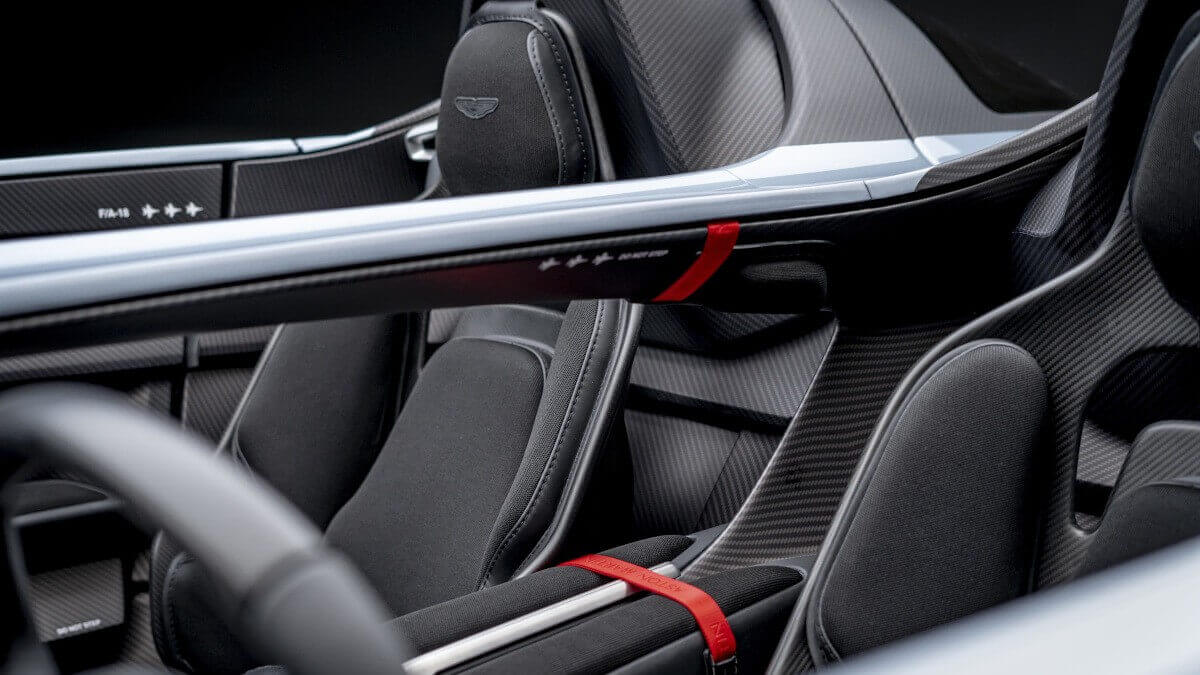

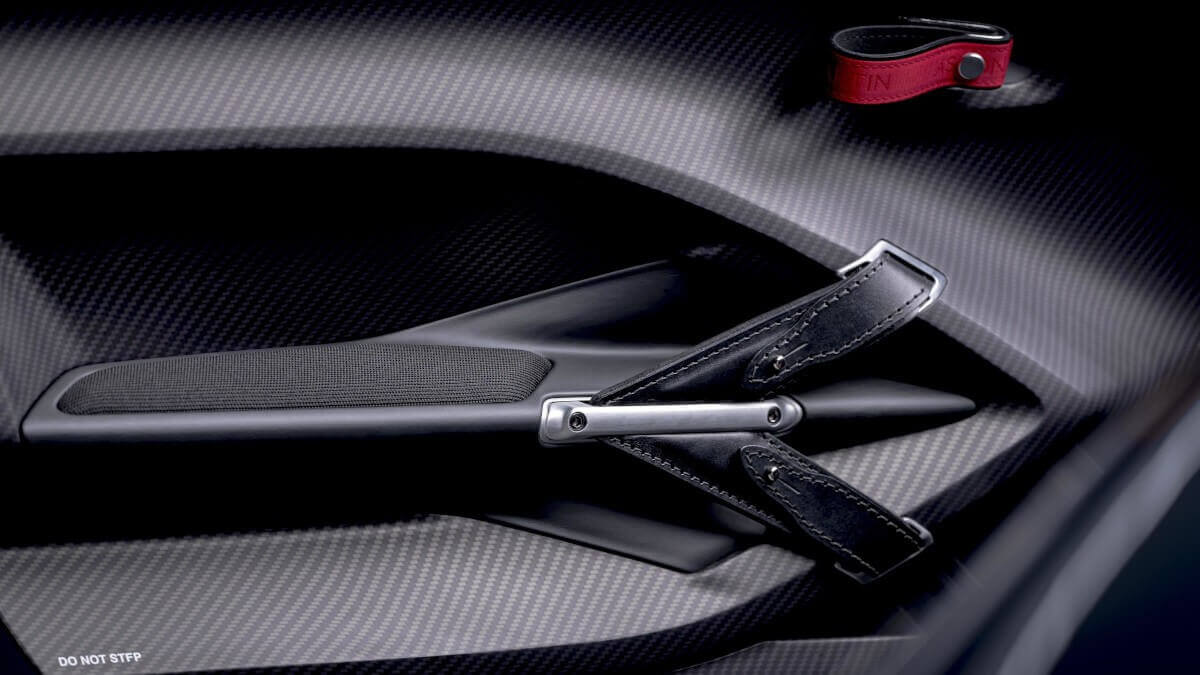

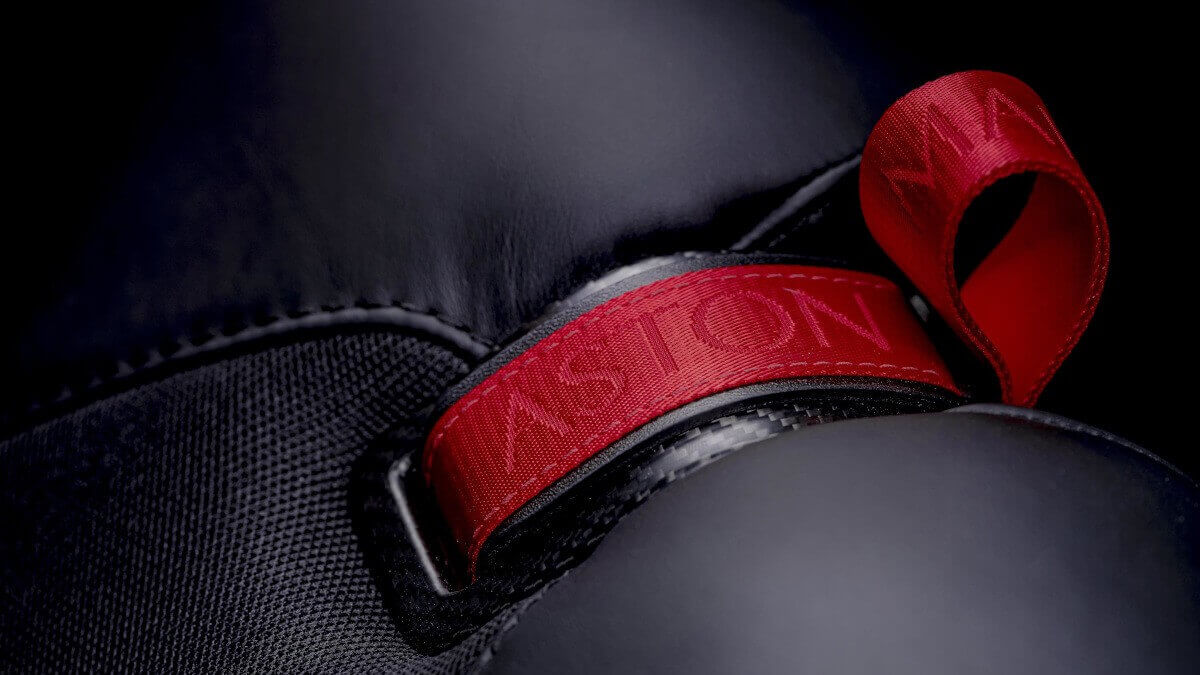

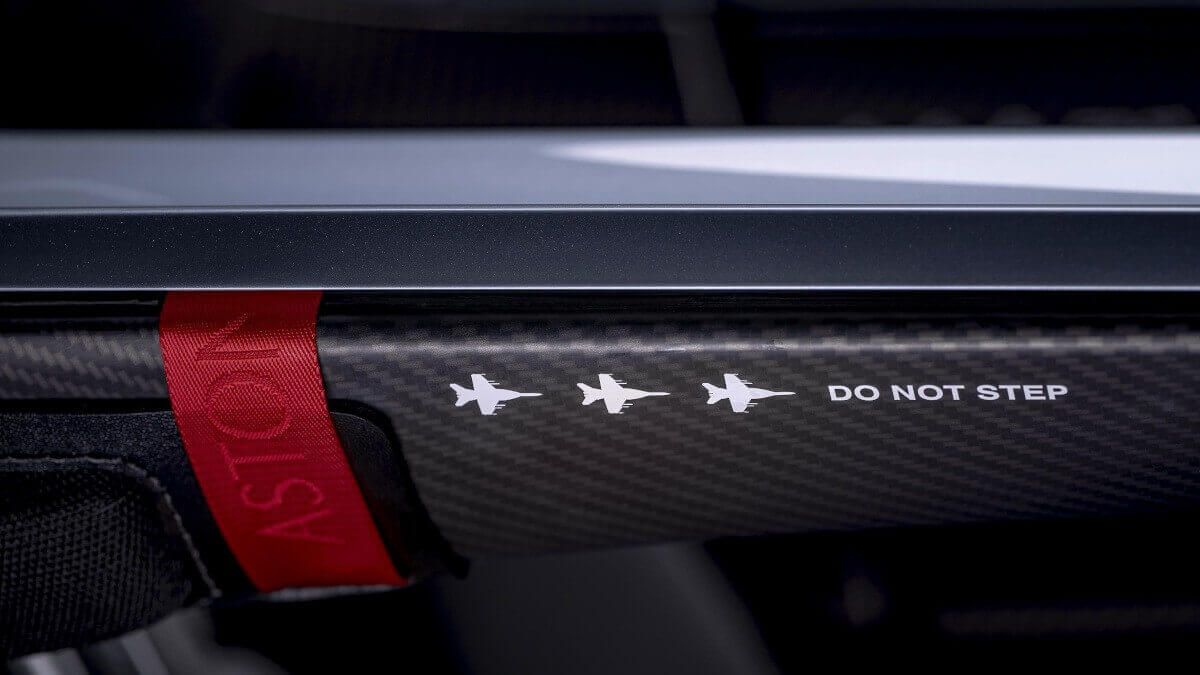

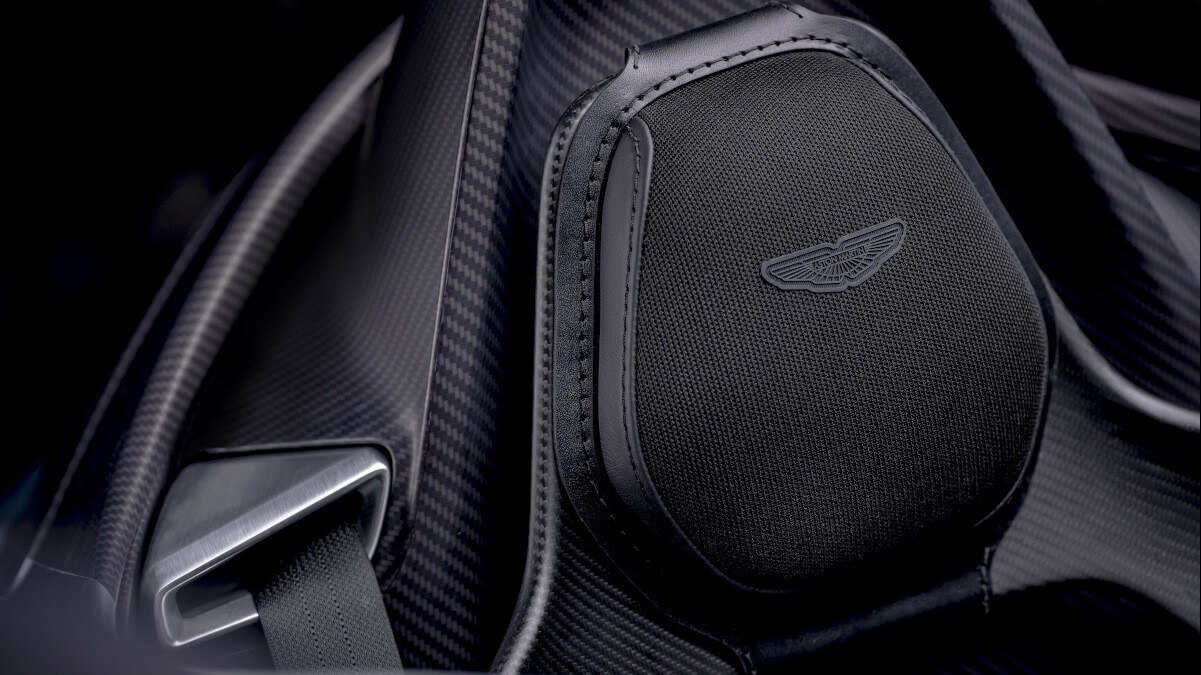



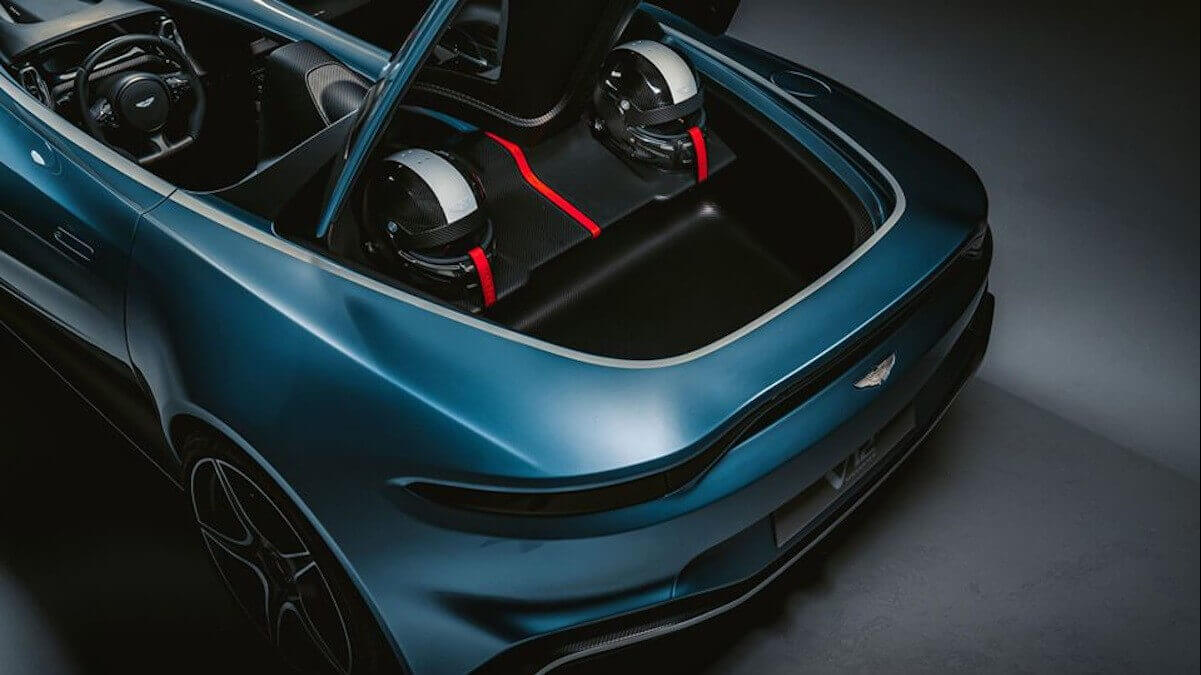

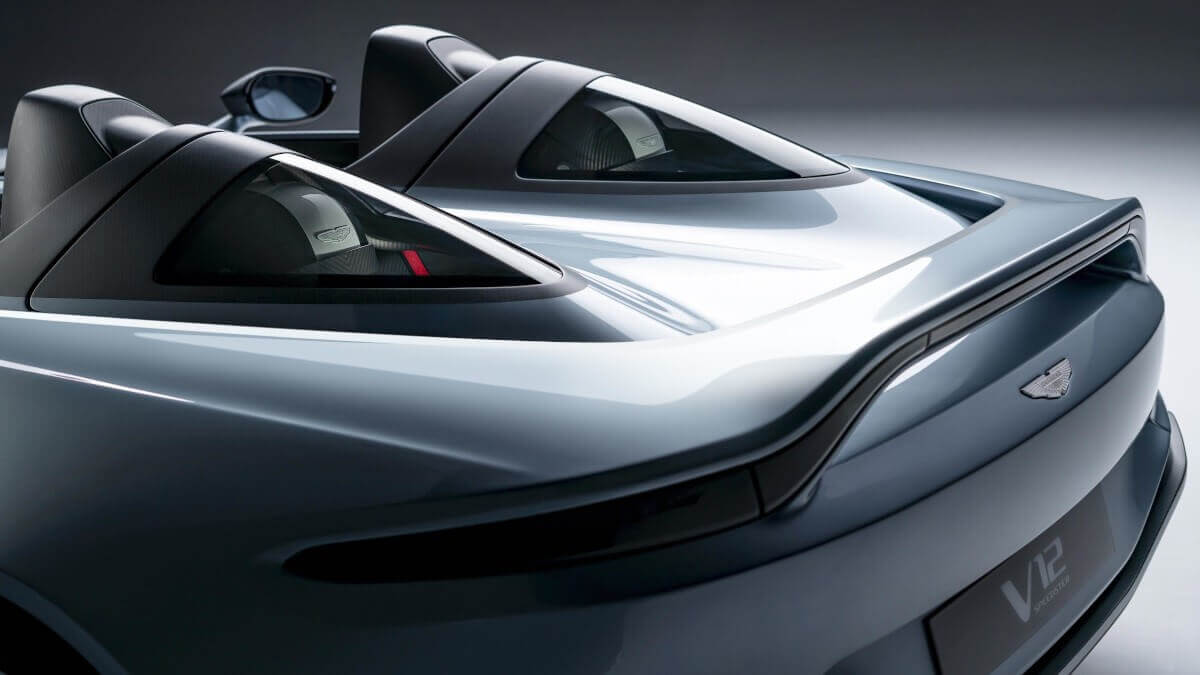

A mix of modern and traditional materials is used inside. Structural parts are made of silk-matt carbon fibre. In addition, aluminium, chrome, hand-sewn leather and rubber parts produced with a 3D printer are used. Instead of a classic glove compartment, there is a removable leather bag in front of the passenger. The grey presentation car in our picture gallery also shows the optional design package ‘F/A-18’, which was created through a new cooperation with Boeing and is inspired by the fighter jet of the same name. While the bodywork is in classic ‘Skyfall Silver’, the interior of this package features dark chrome, seat covers in black leather and technical fabric, as well as belts and door pulls in red. In addition, there are various F/A-18 motifs and warning signs not to step on sensitive parts.
Beneath the sensational looking body are components from both the Vantage and the DBS. The aluminium structure is thus a hybrid structure that forms a platform all of its own. At the front, double wishbones guide the wheels, while a multi-link axle with coil springs and adaptive dampers operates at the rear. Behind the 21-inch wheels are carbon-ceramic brake discs with a diameter of 410 millimeters at the front and 360 millimeters at the rear. At the front is the 5.2-liter V12 biturbo engine from the DB11 and DBS, which is expected to produce 700 hp and 753 newtonmeters of torque in the V12 Speedster. Power is transmitted to the rear wheels via an eight-speed automatic transmission by ZF and a limited slip differential. Aston Martin is aiming for a sprint time to 62 mph in about 3.5 seconds. The topspeed is to be 186 mph.
The order books for the V12 Speedster are now open. The price of the radical two-seater starts at £ 765,000 (incl. VAT). The first examples of the small series, limited to 88 units, are to be produced from the first quarter of 2021.
Images: Aston Martin


